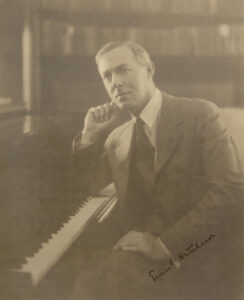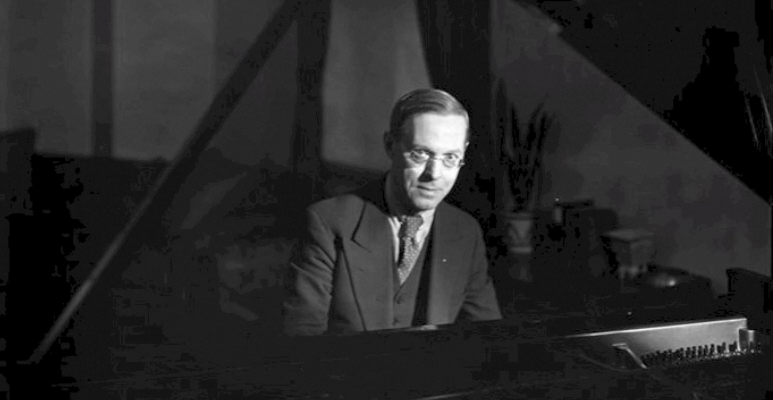 The Australian-born pianist Ernest Hutcheson was born 150 years ago, on July 20, 1871.
The Australian-born pianist Ernest Hutcheson was born 150 years ago, on July 20, 1871.
Hutcheson had studied under Carl Reinecke (who studied with Mendelssohn, Schumann and Liszt), Bernhard Stavenhagen (a pupil of Liszt) and Bruno Zwintscher (who studied under Moscheles, among others). He would become Dean and then President of the Juilliard School, teaching eminent pianists that included Bruce Hungerford and Abram Chasins. He wrote two important books, “The Literature of the Piano” and “The Elements of Piano Technique,” and it is thanks to Hutcheson’s support that Gershwin was able to have the seclusion he required at Chautauqua Institution in order to meet the deadline to finish his Piano Concerto in F.
Given his stature, it is disappointing that Hutcheson made no official sound recordings, though he did like many artists of the time produce reproducing player-piano rolls (which for reasons that I will fully explain in an upcoming detailed feature on my website I do not consider to be accurate). Fortunately, a few samples of him in actual audio recordings exist, and they feature bold and vivacious pianism – truly nothing dry and academic, as one might expect from a pedagogue who headed one of the most famous music conservatories (certainly based on how things are these days).
This October 18, 1936 Magic Key broadcast of Hutcheson playing both with orchestra and solo opens with Milton Keys delivering a delightfully dated and grandiose introduction. We then hear Hutcheson in the last movement of Mendelssohn’s Piano Concerto No.1 in G Minor Op. 25 and then in the famous Spinning Song Op. 67 No. 4. Aged 65 at the time of this performance (with another ten years left in his tenure at Julliard), Hutcheson plays with great agility and gusto, with crystalline articulation, sparkling tone, and wonderful nuancing (lyrical lines are beautifully phrased). Terrific playing!
Here is a privately-produced recording of Hutcheson playing the Tausig arrangement (with a few of his own touches) of Bach’s Toccata & Fugue in D Minor BWV 565. I am not certain of the conditions under which this private recording was made, ca.1940: it was sent to me by a subscriber some time ago. The original file I received had a very poor side join between the first and second discs, with half a measure of music missing and a massive pitch change – I did some editing to minimize those issues (there is now just a brief pitch wobble at the transition time but the major damage is fixed), though I was unable to improve the sound.
The playing itself is terrific, with a robust tonal palette (with an impressive bass sonority that doesn’t obscure the content of other registers), clear textures, rhythmic precision without rigidity, and dramatic use of tempo adjustments and inflexions. His timing throughout is especially effective, with mindful shifts at transition points and very subtle pauses to create effect and clarify the structure of the work.
And here, the glorious highlight: a concert recording of Beethoven’s Emperor Concerto with the Chautauqua Symphony Orchestra conducted by Albert Stoessel – the likely date of the performance is July 24, 1938.
This broadcast recording features some astounding pianism. He plays with a gorgeous polished sonority, marvellous variety of articulation, wonderfully shaped phrasing, some truly expansive rubato, some volcanic climaxes, and a whole host of other qualities that point to exceptional musicianship and mastery of the finest levels of technique. What a master!
Given that Hutcheson lived until 1951, it is to be hoped that more recordings will be found, but we can be grateful that we can hear him in some fairly substantial offerings in these private recordings.
